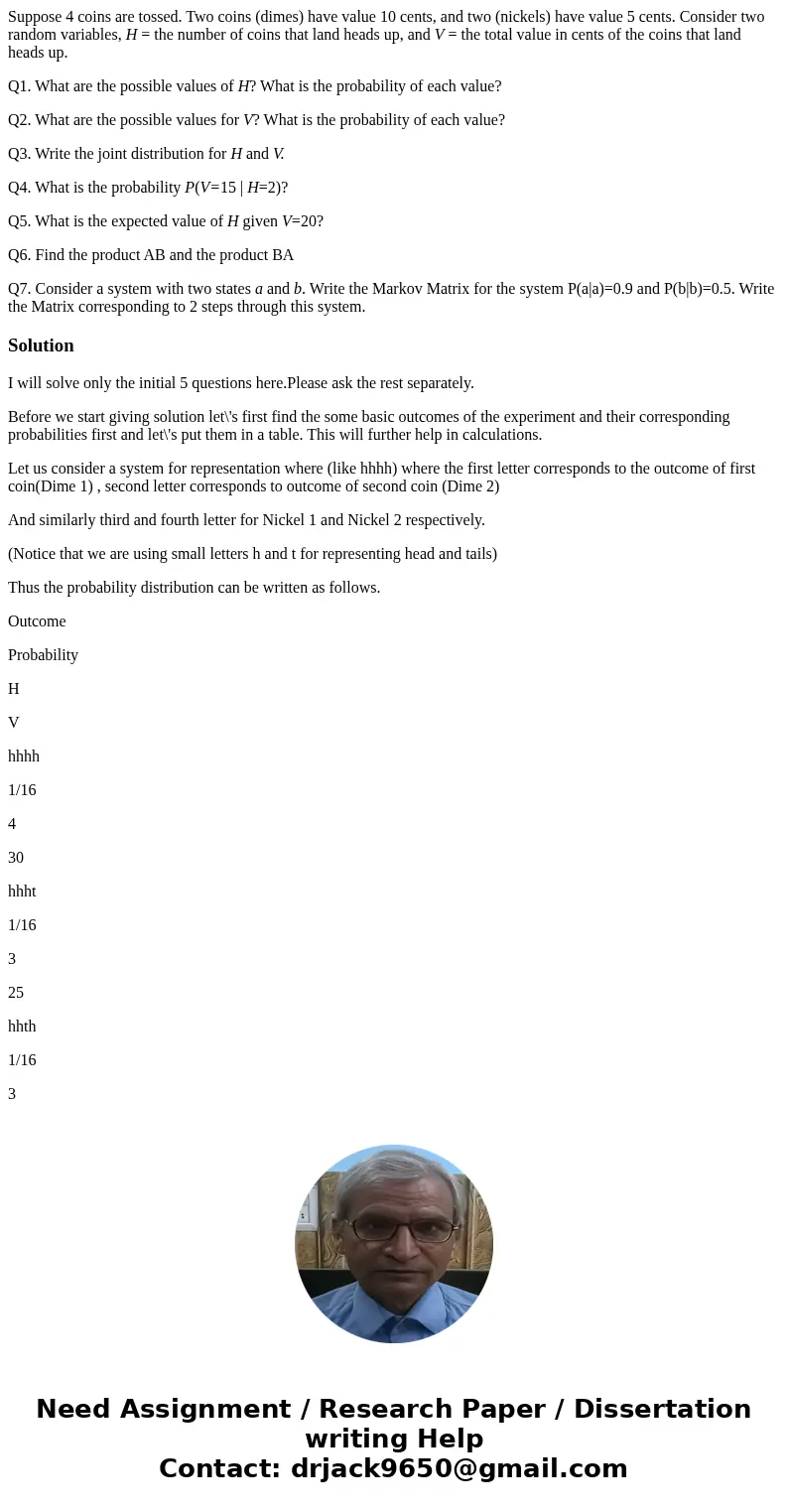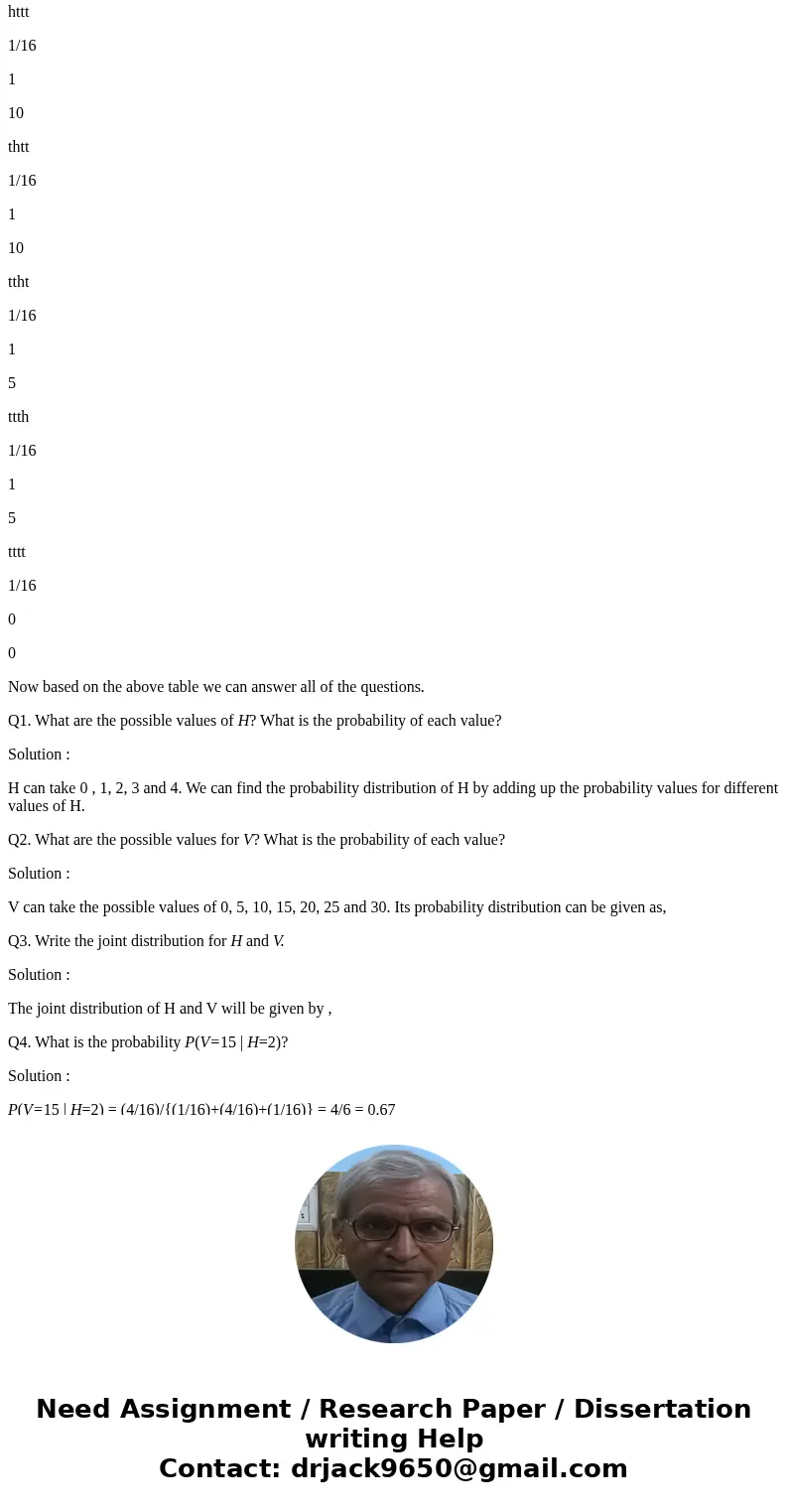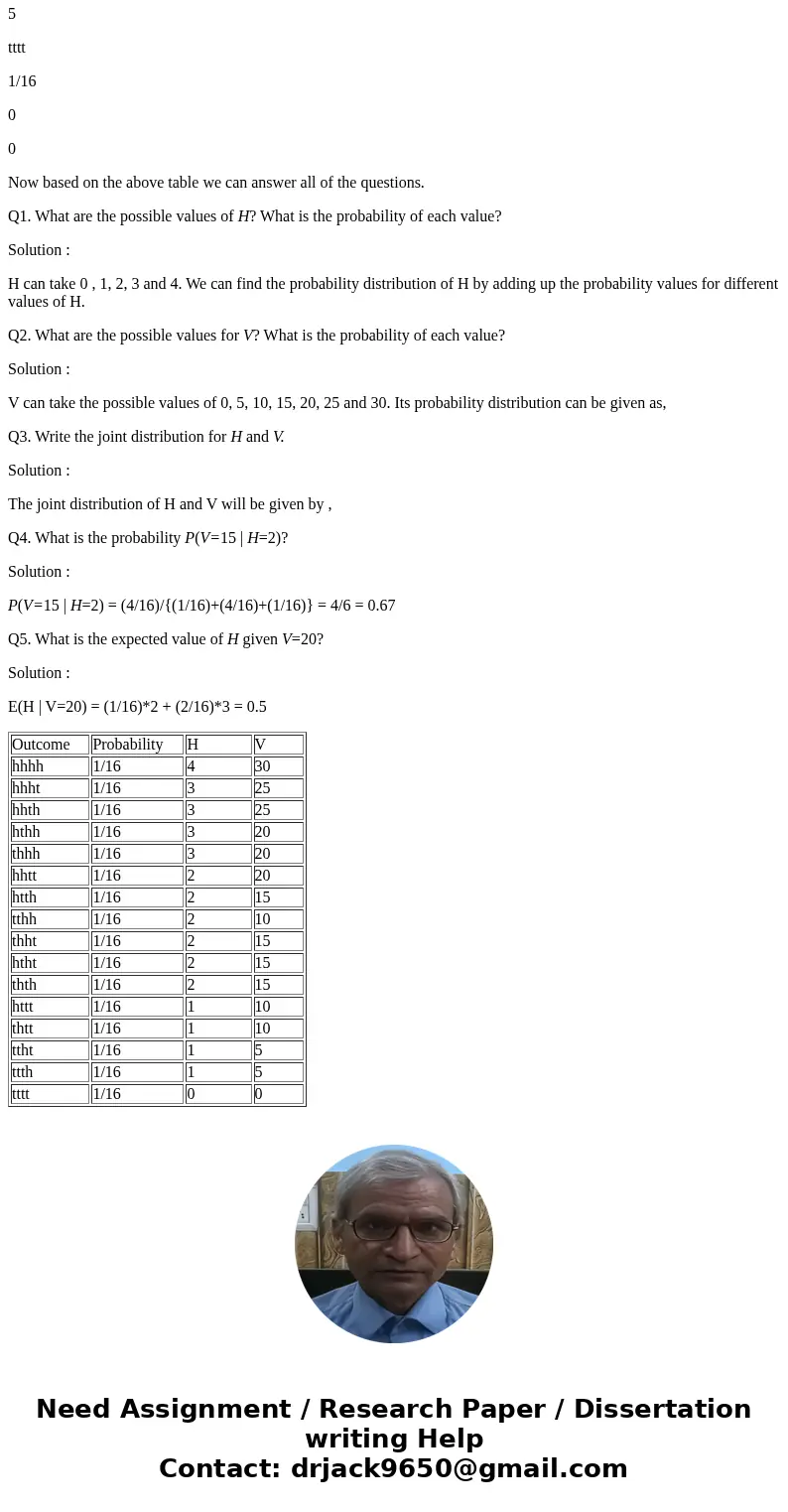Suppose 4 coins are tossed Two coins dimes have value 10 cen
Suppose 4 coins are tossed. Two coins (dimes) have value 10 cents, and two (nickels) have value 5 cents. Consider two random variables, H = the number of coins that land heads up, and V = the total value in cents of the coins that land heads up.
Q1. What are the possible values of H? What is the probability of each value?
Q2. What are the possible values for V? What is the probability of each value?
Q3. Write the joint distribution for H and V.
Q4. What is the probability P(V=15 | H=2)?
Q5. What is the expected value of H given V=20?
Q6. Find the product AB and the product BA
Q7. Consider a system with two states a and b. Write the Markov Matrix for the system P(a|a)=0.9 and P(b|b)=0.5. Write the Matrix corresponding to 2 steps through this system.
Solution
I will solve only the initial 5 questions here.Please ask the rest separately.
Before we start giving solution let\'s first find the some basic outcomes of the experiment and their corresponding probabilities first and let\'s put them in a table. This will further help in calculations.
Let us consider a system for representation where (like hhhh) where the first letter corresponds to the outcome of first coin(Dime 1) , second letter corresponds to outcome of second coin (Dime 2)
And similarly third and fourth letter for Nickel 1 and Nickel 2 respectively.
(Notice that we are using small letters h and t for representing head and tails)
Thus the probability distribution can be written as follows.
Outcome
Probability
H
V
hhhh
1/16
4
30
hhht
1/16
3
25
hhth
1/16
3
25
hthh
1/16
3
20
thhh
1/16
3
20
hhtt
1/16
2
20
htth
1/16
2
15
tthh
1/16
2
10
thht
1/16
2
15
htht
1/16
2
15
thth
1/16
2
15
httt
1/16
1
10
thtt
1/16
1
10
ttht
1/16
1
5
ttth
1/16
1
5
tttt
1/16
0
0
Now based on the above table we can answer all of the questions.
Q1. What are the possible values of H? What is the probability of each value?
Solution :
H can take 0 , 1, 2, 3 and 4. We can find the probability distribution of H by adding up the probability values for different values of H.
Q2. What are the possible values for V? What is the probability of each value?
Solution :
V can take the possible values of 0, 5, 10, 15, 20, 25 and 30. Its probability distribution can be given as,
Q3. Write the joint distribution for H and V.
Solution :
The joint distribution of H and V will be given by ,
Q4. What is the probability P(V=15 | H=2)?
Solution :
P(V=15 | H=2) = (4/16)/{(1/16)+(4/16)+(1/16)} = 4/6 = 0.67
Q5. What is the expected value of H given V=20?
Solution :
E(H | V=20) = (1/16)*2 + (2/16)*3 = 0.5
| Outcome | Probability | H | V |
| hhhh | 1/16 | 4 | 30 |
| hhht | 1/16 | 3 | 25 |
| hhth | 1/16 | 3 | 25 |
| hthh | 1/16 | 3 | 20 |
| thhh | 1/16 | 3 | 20 |
| hhtt | 1/16 | 2 | 20 |
| htth | 1/16 | 2 | 15 |
| tthh | 1/16 | 2 | 10 |
| thht | 1/16 | 2 | 15 |
| htht | 1/16 | 2 | 15 |
| thth | 1/16 | 2 | 15 |
| httt | 1/16 | 1 | 10 |
| thtt | 1/16 | 1 | 10 |
| ttht | 1/16 | 1 | 5 |
| ttth | 1/16 | 1 | 5 |
| tttt | 1/16 | 0 | 0 |




 Homework Sourse
Homework Sourse